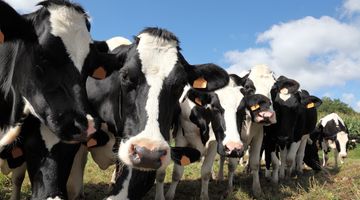Waikato dairy farmer Rod McKinnon explains how he manages farm effluent for efficient and effective use.
Questions for discussion
- What is soil moisture deficit?
- How would effluent help with this?
Transcript
ROD McKINNON
We wanted to build the new feed pad, and the existing infrastructure that we had just was never going to be satisfactory to do what we wanted. So we actually decided we’d build a large storage pond. The benefits of having storage to me became apparent straight away. So we made it as large as possible, and it gave us the ability to have storage for a good 100 days of the year and then use the nutrients when the farm really needed it rather than spreading effluent when it didn’t need to happen. We have a bunker that separates the solids out, and then the liquid effluent goes into the pond and then we irrigate to probably almost half of our farm. And then we try to use that at times of the year when we’ve got soil moisture deficits, so through the summer or when we want to put effluent onto cropping ground and things like that.
Acknowledgements
Rod McKinnon
Drone footage of feed pad and effluent pond, Rod at effluent pond and Rod hooking up effluent spreader to quad bike filmed by AF Productions and Paul Sutherland Photography. Copyright Yardmaster
Acknowledgement
This video has been developed in partnership with the Waikato Regional Council as part of the Rivers and Us resource.



